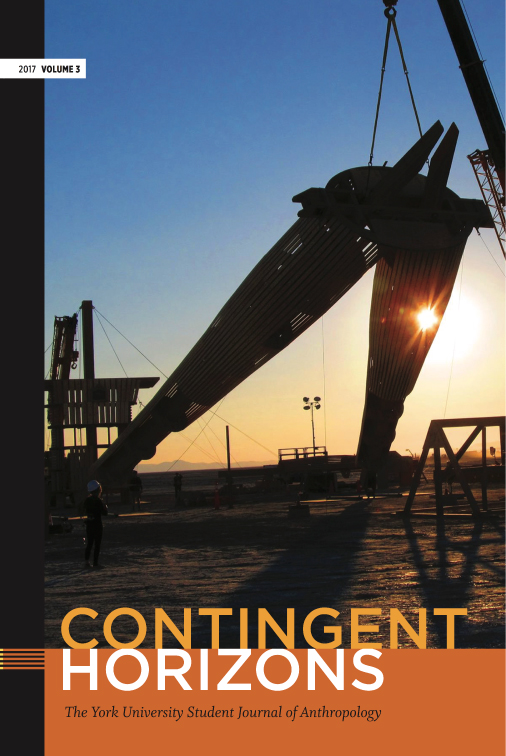Abstract
Modern medicine questions the link between nature, society, and body through the development of the medical technology and the increase of life expectancy. Based on anthropological and sociological resources, this paper will try to unpack the Western vision of an ill body and the treatments that are established in response. This critical reflection on neonatal resuscitation will lead me to propose the need to re-evaluate such system. I will use a transcultural approach when analyzing the care that is given to newborns presenting a critical vital prognostic, while drawing specifically on French-based research. In its attempt to postpone death, biomedicine has allowed for humans to challenge nature and its inexorable processes, and defy the physiological laws. However, what is the price for this progress? In order to tackle these sensitive issues, it is important to leave our judgements behind and to study our therapeutic practices with a new perspective.
La médecine moderne redéfini le lien entre nature, société, et corps au travers de l’essor des diverses technologies et par le prolongement de la vie. S’appuyant sur des références anthropologiques, sociologiques mais également éthiques, cet article tentera de déconstruire la vision occidentale d’un corps diminué et l’ampleur des traitements mis en place. Cette réflexion critique de la réanimation néonatale me permettra de proposer une réévaluation du système biomédical. J’utiliserai une approche transculturelle des soins adressés aux nourrissons présentant un pronostic vital critique, me concentrant sur la situation française. En s’efforçant d’éloigner la mort, la biomédecine a réussi à autonomiser le corps face à la nature, repoussant les lois physiologiques. Cependant, à quel prix s’effectue ce progrès? Pour appréhender ces questions sensibles, il importe de se départir de tout jugement et d’étudier d’un œil nouveau nos pratiques thérapeutiques.
TRANSFER OF COPYRIGHT
The Corresponding Author (acting on behalf of all authors of the respective work) transfers and assigns to the Journal (Contingent Horizons: The York University Student Journal of Anthropology), during the full term of copyright and any extensions or renewals of that term, all copyright in and to the Work, including but not limited to the right to publish, republish, transmit, sell, distribute and otherwise use the Work in electronic and print editions of the Journal and in derivative works throughout the world, in all languages and in all media now known or later developed, and to license or permit others to do so.
AUTHORS’ RETAINED RIGHTS
Notwithstanding the above, the Authors retain all proprietary rights other than copyright, such as patent rights, in any process, procedure or article of manufacture described in the Work. The Journal grants back to the Authors the following distinct rights:
- The non-exclusive right to use, reproduce, distribute, publicly perform, and publicly display the Work in any medium in connection with the Authors’ academic and professional activities, including but not limited to teaching, conference presentations, and lectures.
- The non-exclusive right to create derivative works from the Work.
- The non-exclusive right to make full use of the Work in future research and publications, including the right to republish the Work in whole or in part in any book that one or more of the Authors may write or edit after the Work has appeared.
- The non-exclusive right to authorize others to make any non-commercial use of the Work.
- The non-exclusive right to make both the pre-print and the final published version available in digital form over the Internet, including but not limited to a website under the control of one or more of the Authors or their employers, or through open access digital repositories such as those maintained by institutions, scholarly societies, or funding agencies.
AUTHOR’S DUTIES
When distributing or re-publishing the Work as authorized above, the Corresponding Author agrees to credit the Journal as the place of first publication.
AUTHOR’S WARRANTY
The Corresponding Author represents and warrants that the Work is the Authors’ original work and that it does not violate or infringe the law or the rights of any third party and, specifically, that the Work contains no matter that is defamatory or that infringes any literary or proprietary rights, intellectual property rights, or any rights of privacy. The Corresponding Author also warrants that he or she has the full power to make this agreement, and if the Work was prepared jointly, the Corresponding Author agrees to inform the Authors of the terms of this Agreement and to obtain their written permission to sign on their behalf. The Corresponding Author agrees to hold the Journal harmless from any breach of the aforestated representations.
JOURNAL’S DUTIES
In consideration of the Corresponding Author’s grant of rights, the Journal agrees to attribute the Work to the Authors.
ENTIRE AGREEMENT
This agreement reflects the entire understanding of the parties. This agreement may be amended only in writing by an addendum signed by the parties. Amendments are incorporated by reference to this agreement.
